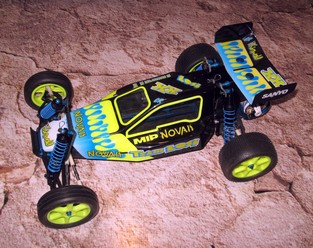 Most people collect something, but how many of us actually properly take care of what we own? Preserving the past and what we have worked so hard to find is important. This second in a series of articles will give you a brief idea of how to store and care for your RC or any collectible in general. General Storage
PAPER INSTRUCTIONS & KIT BOXEs
METAL PRESERVATION All metals with the exception of gold are susceptible to oxidation or corrosion. Prevention of corrosion should be the most important aspect of caring for your RC as it is much easier, and less costly to prevent oxidation than it is to restore the metal. Most corrosion is caused by moisture. The obvious answer to preventing oxidation to your RC is to store them in a relatively dry environment. The naturally occurring oils on skin can be very damaging to metal. Do not handle metal parts with bare hands, gloves should be used when possible. Again, this is not always a practical consideration for an RC that is still in use, but once the kit is deemed to be in a “collector status” the kit should be refurbished, prepped for storage and handled with gloves whenever possible. STEEL: This is one of the most common metals and is commonly found in RC, axles, hardware, gears, and motor cans are often made of steel. Steel parts should be preserved by keeping them oiled with lightweight oil. When reassembling a kit, screws can be oiled, the excess wiped off, and reinstalled. Axles should be removed from the kit and the same steps followed as with oiling hardware. Do not forget to also oil treat out drives from the transmission. ALUMINUM & ZINC (AKA Pot Metal & White Metal): Most aluminum utilized in RC is anodized and thus protected from oxidation. Bare aluminum and zinc (often found on AYK, early Tamiya and Kyosho kits) will oxidize if exposed to excessive moisture. The oxidation of these metals will often result in a “fish scale” or powder like film. These metals should be protected with an oil coating or silicone based spray. A secondary option for bare aluminum or Zinc parts is to clear coat the part resulting in a permanent sealing of the component. RUBBER TIRES AND WIRING Mint condition vintage tires, bodies and chassis are the hardest parts to locate, and as time passes, kits with intact OEM tires will be highly sought after as rubber degrades rapidly. Museum curators often state that the preservation of rubber parts is the most time consuming and challenging aspect of their positions. This is a serious issue that effects more than RC. Rubber parts of WWII weapons systems, tires, belts, hoses, and even Neil Armstrong's NASA space suit are in serious jeopardy of disappearing due to the degradation of their rubber components. With care, the life of your rubber RC parts can be extended.
1 Comment
|
AuthorMichael Rogers Archives
July 2022
Categories |
The best way to search for the part you need is by the manufacturer's part number. If you do not know the part number, please visit our Archive Page, or use a common term like, "Losi XX shock tower."
All prices are in USD. Copyright © 2011-2024 Valkyrie RC Motorsports LLC. All rights reserved. All product names, logos, and brands are property of their respective owners. All wording and photos on this site are the property of Valkyrie RC Motorsports LLC, and may not be used without prior written consent..
BBB current rating is A+.
BBB current rating is A+.

 RSS Feed
RSS Feed

